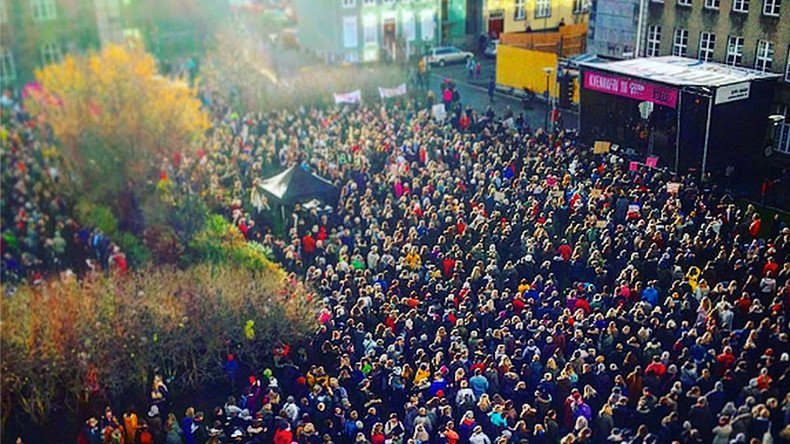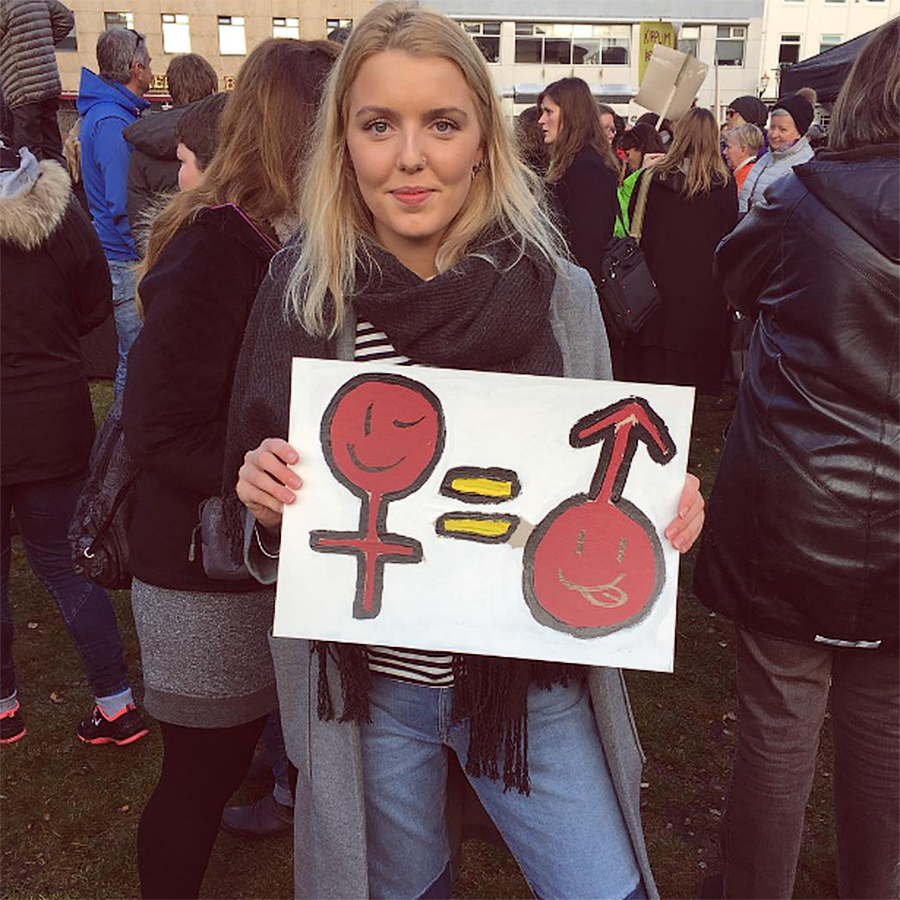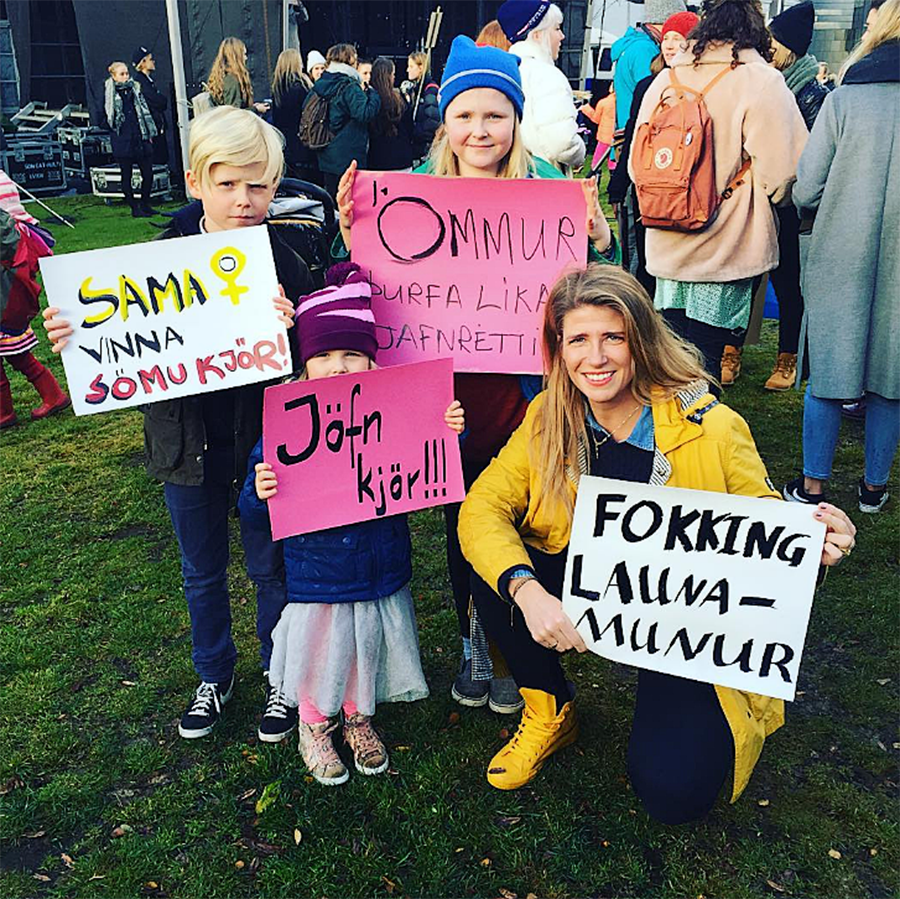Iceland’s women leave work at 2:38pm to protest wage gap with men

Thousands of Icelandic women gathered in Reykjavik’s main square to demonstrate against wage inequality, despite the country topping international gender equality rankings.

Women in Iceland were encouraged to leave work at 2:38pm – 30 percent earlier than the end of the standard nine-to-five work day – to symbolize the difference between the average earnings of men and women in the country.
“We know that no country in the world has reached gender equality, but today reminds me that not even the country that’s supposed to have the most equal rights pays women the same as men,” a protester told Refinery29, an online media outlet.

Organized by unions and women’s rights organizations, Monday’s protest follows the model set by the first walkout on the same date in 1975, seen as a landmark in the nation’s struggle for gender equality. It was followed by several others, with the time of the walkout moving later and later in the day as women’s pay rises, though organizers say that at the current rate it will take until 2068 to reach equality.
“No one puts up with waiting 50 years to reach a goal. It doesn’t matter whether it’s a gender pay gap or any other pay gap. It’s just unacceptable to say we’ll correct this in 50 years. That’s a lifetime,” Gylfi Arnbjörnsson, president of ASÍ, the Icelandic Confederation of Labor, told RUV.
Sexism, childbirth or generational lag?
Although the earnings gap has become a centerpiece of feminist campaigns around the world, the explanations for its existence are complex, and subject to heated debate.
The 30 percent difference is derived by multiplying the number of men in Iceland by the amount they earn, and then doing the same for women. But there are more working men in the country of 330,000 people than women, and more work full-time jobs.

But even when the overall differences in work volume are taken into account, the wage gap – the difference between how much each gender earns per hour – is 14 percent, slightly less than the EU average of 16.5 percent.
Campaigners say that this is evidence of discrimination.
Yet, actual wage discrimination – paying women less for doing the same job – has been illegal in Iceland since the middle of the 20th century.
Education levels, employment, and political participation among women are also higher than almost anywhere in the world. Four out of five Icelandic women are employed, 65 percent of university students are women, and so are 41 percent of the deputies in the parliament, and almost half of the country’s top managers, thanks to quotas. Jóhanna Sigurðardóttir, who was the country’s first female prime minister between 2009 and 2013, made tackling wage inequality her primary aim while in office.
In fact, up to the age of 30, women in Iceland outperform men, both in hourly and overall earnings.
Many of those who dismiss the wage gap – a wide coalition from academics to conservative men’s rights activists – claim that the explanation lies in more than simple disregard for women’s abilities among sexist employers, or workplaces that do not allow women to express their talents.
The major dividing line appears to concern childbirth, and the subsequent years out of employment. Not only do women who become mothers not earn money, when they return to the workplace their wages tend to be lower than those of their male counterparts who never left the office.
Since 2000, both fathers and mothers have been entitled to at least three months' paid leave, yet the careers of many women stall after giving birth.
In fact, the choice of different jobs is the second most likely factor behind the wage gap. EU statistics show that significantly more men work in construction, manufacturing, and fishing – three potentially lucrative spheres of employment. Women, on the other hand, are overrepresented in social work, education, and healthcare – areas where wages are secure, but generally more modest.
Encouraging women to study for STEM (Science, Technology, Engineering and Mathematics) degrees, and then taking up careers in high-earning spheres, has been at the heart of many programs in Iceland – yet the gap remains.
Many women’s rights campaigners are hoping that as the generational lag disappears, and more empowered females enter the workplace, wage gaps will become a thing of the past. Whether this is achievable in less than 50 years, or at all, is an open question, but if it does happen anywhere, it will very possibly happen in Iceland.














